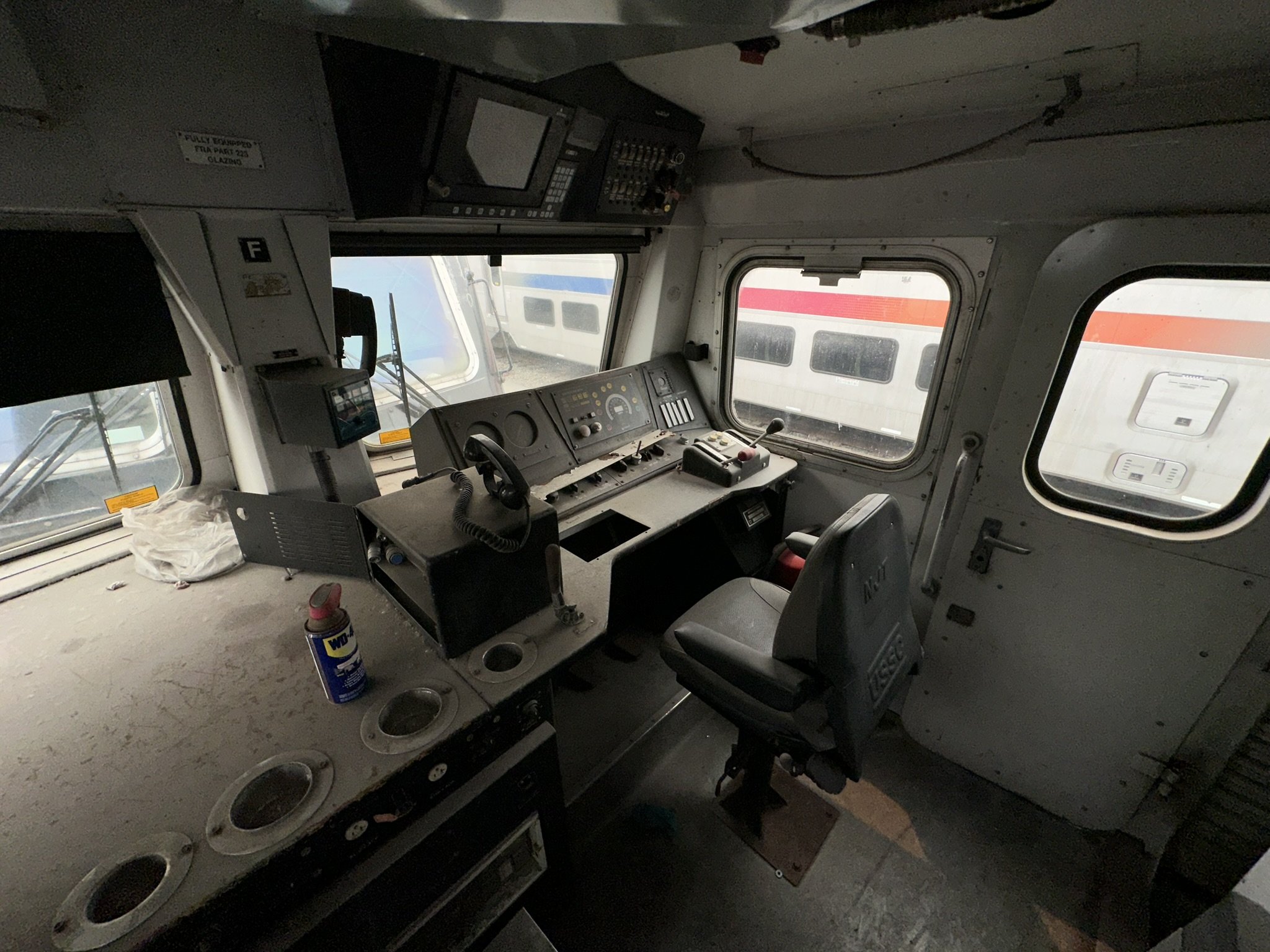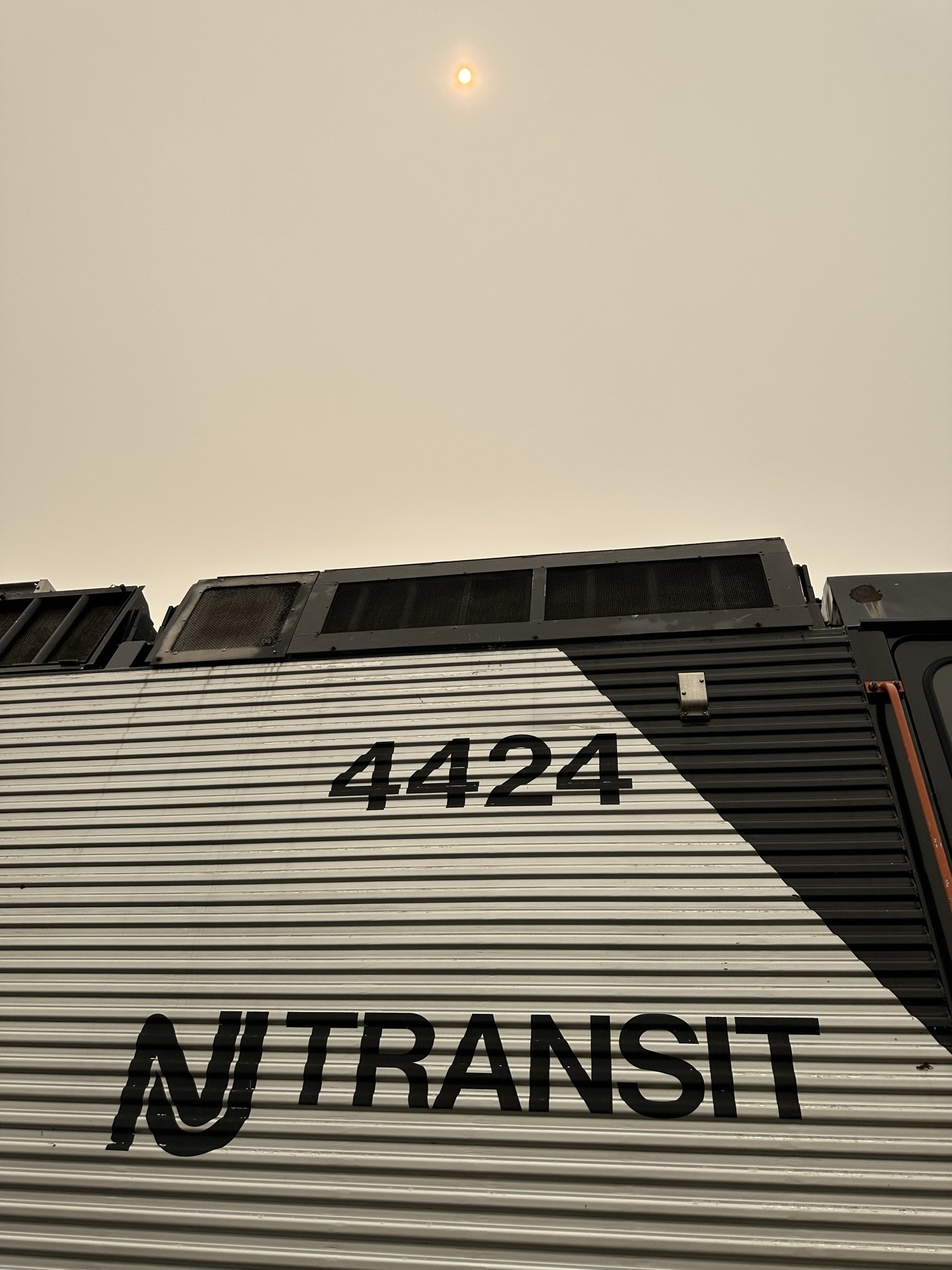
NJ Transit ALP-44 No. 4424
The newest and youngest addition to the URHS collection
Dover, NJ, February 2001 Photo: Steve Barry
The ALP-44 was an electric locomotive that served NJ Transit from 1989 to 2011. During these locomotives’ careers, they hauled commuter trains on all of NJ Transit’s electrified lines from the suburbs to Hoboken and New York City. Although the ALP-44’s operational life was short relative to other models, its impact was large on the modernization of NJ’s commuter rail infrastructure.
The ALP-44 holds a special place in the heritage of NJ Transit, and was integral in the agency’s most formative years. It was the very first model of electric locomotive purchased by the state of New Jersey. It represented the agency’s first foray into the global marketplace, with all 32 units being built in Sweden. Most notably, 4424 and its sister ALP-44M variants made possible NJ Transit’s extraordinarily successful MidTOWN DIRECT Service.
No. 4424 is one of 32 ALP44s built for NJ Transit by ABB (Asea Brown Boveri) in Sweden between 1989 and 1997. Until 2011, these locomotives hauled daily commuter trains on the Morris & Essex, Gladstone, Montclair-Boonton, and Northeast Corridor lines. No. 4424, built in 1996, is now the youngest artifact in the URHS collection.
The preservation of an ALP-44 was a mutual decision between URHS and NJ Transit. As such, NJ Transit gave URHS free reign to choose which unit was most worthy of preservation. No. 4424 was chosen as it was deemed to be in the best condition of all of the remaining units. The engine came to URHS in near-complete, original condition. Along with the No. 4424 comes a trove of documentation. As part of this donation, NJ Transit has donated all of its paper and digital documentation related to the construction and maintenance of the ALP-44 fleet.
Have a personal story with the ALP-44? We want to hear it! Visit our “Share Your Story” page and become a part of our oral history archive!
Tell us your story!
MODEL: ALP-44M
BUILDER: ABB (Asea Brown Boveri)
BUILT: 1996
OWNER: NJ Transit
IN-SERVICE: 1996-2011
Bernardsville, NJ, April 30, 1996 Photo: Steve Barry
Dover, NJ Photo: NJ Transit Archives
About the ALP-44
In the late 1980s, NJT’s roster included diesel locomotives, self-propelled electric cars, and only a handful of electric locomotives which were purchased second-hand from Amtrak. Sorely needing its own electric locomotives, NJ Transit looked to ABB, from whom Amtrak had recently purchased their new fleet. ABB came back with a new model, specially designed only for NJ Transit, which would be the ALP-44 (ALP=American, Locomotive, Passenger).
The new locomotives were exceptionally capable. They could get up to 125 miles per hour and could generate up to 7000 horsepower. All of that was in a package that was 20 feet shorter and more than half the weight of its predecessor. The last batch of ALP-44s, of which No. 4424 was a part, broke new ground by being computer-controlled by microprocessor, hence the addition of M to their model name.
MidTOWN DIRECT Service
In NJ Transit’s first decades, the agency was tasked with taking its many legacy routes, which were formerly competing companies, and merging them into a cohesive, world-class system. Only a few decades earlier, these railroads used 5 different waterfront terminals to access New York City. Only the Pennsylvania Railroad had the ability to take their passengers directly into New York City. A dream for many commuters had long been the “one-seat-ride” from New Jersey straight into New York, which didn’t require a switch to a ferry or the PATH train from Hoboken and Jersey City.
Commuters got their wish with the completion of the “Kearny Connection,” later called MidTOWN DIRECT Service. On June 10, 1996, Governor Christine Todd Whitman ran the ceremonial first train through a banner at Newark Broad Street station. From that day on, several Morris & Essex line trains were rerouted from Hoboken Terminal to New York City, changing the lives of thousands of New Jersey commuters. In the service’s early days, trains were packed to capacity. The direct trip from the New Jersey suburbs to New York Penn station did wonders to attract commuters to ride the train. Ridership on the Morris & Essex Lines increased more than 20% in the first year of service, and has been trending upwards ever since.
Necessary to make all of this possible was the expansion of NJ Transit’s electric locomotive fleet, and thus the ALP-44Ms were ordered. No. 4424 and its sister fleet would haul nearly 5000 commuters to work every morning, with more and more riders as each year passed.
June 10, 1996, Newark, NJ Photo: NJ Transit Archives
June 10, 1996, Newark, NJ Photo: NJ Transit Archives
A MidTOWN DIRECT train climbs the “Kearny Connection” to connect to the Northeast Corridor and into New York City.
Photo: NJ Transit Archives









